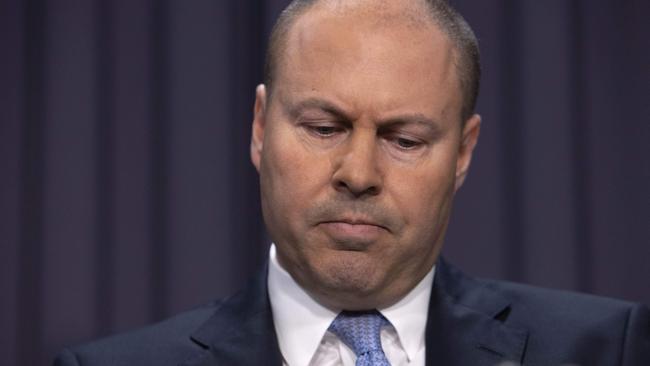Recovery to roll on as Victoria stops its drag
Victoria’s success in suppressing the COVID-19 second wave will turbocharge the national economy ahead of the JobKeeper wage subsidy ending in March.

Victoria’s success in suppressing the COVID-19 second wave will turbocharge the national economy ahead of the JobKeeper wage subsidy ending in March, as NSW and Queensland lead Australia out of recession.
The economic rebound across all states and territories, with the exception of Victoria, exceeded Treasury forecasts as consumer confidence surged and Australians returned to restaurants, cafes and shopping centres.
Victoria, which accounts for a quarter of the nation’s GDP, suffered a minus-1 per cent drop in output between July and September on the back of a second statewide lockdown to neutralise the coronavirus spread.
Federal Treasury, which estimated that Victoria’s second wave would shave $8bn off the national economy, will recast its growth forecasts ahead of the Mid-Year Economic and Fiscal Outlook due to be handed down mid-month.
The Australian Bureau of Statistics’ national accounts data showed NSW and Queensland leading the pack, recording quarterly volume measures of 6.8 per cent, followed by South Australia (6.7 per cent), the Northern Territory (6 per cent), Tasmania (5.5 per cent) and Western Australia (4.9 per cent).
Senior government sources told The Australian the rapid removal of social distancing and border restrictions would drive further growth in the December quarter, as Australians begin opening their wallets and resuming interstate travel.
Josh Frydenberg said while the national economic recovery was ongoing, Victoria’s success in combating the coronavirus would deliver a significant coup in accelerating jobs growth.
“Victoria — a quarter of the national economy — has only just begun its recovery after the devastating second wave,” the Treasurer said.
The ABS said the Melbourne lockdown had constricted Victoria’s economy, driven by “declines in household spending and investment”.
“More stringent restrictions associated with the second lockdown resulted in a 9.8 per cent fall through the year,” the ABS national accounts analysis said.
“Household spending declined 1.2 per cent in (the) September quarter, driven by clothing and footwear, furnishings and recreation and culture. Spending on food rose 6.6 per cent, partly offsetting the fall, as households prepared for the second lockdown.”
Australian Industry Group chief executive Innes Willox said the “healthy GDP performance at the national level came despite a considerable drag from Victoria”.
Mr Willox flagged the potential for boosted economic growth into next year as Victoria returned to normal economic activity.
“If the Victorian economy rebounds in the December quarter and the national economy reaps the full benefit of the opening of internal borders, we should be looking at further good news into the new year,” Mr Willox said. “This … should fuel the lift in consumer and business confidence that will be required to resume a path of self-sustaining growth.”
NSW Treasurer Dominic Perrottet said the state’s economy had helped lead the country out of recession, driven by a 10.8 per cent increase in household consumption and strong public investment.
“There are many challenges ahead but we are now seeing greater confidence in the community and a return to solid economic growth for NSW,” he said. “Our ability to keep as much of NSW open as possible and in the process support jobs and businesses with $29bn in health, economic and social support measures is reflected in these … results.”




To join the conversation, please log in. Don't have an account? Register
Join the conversation, you are commenting as Logout